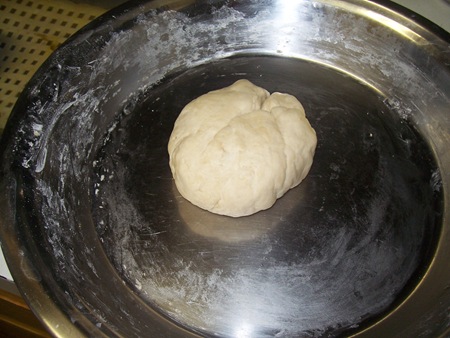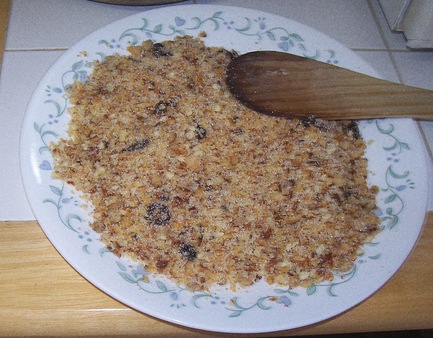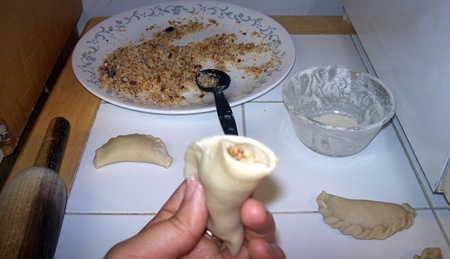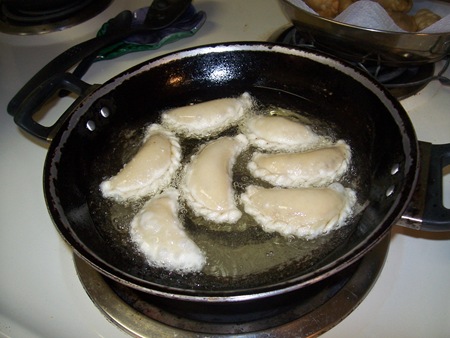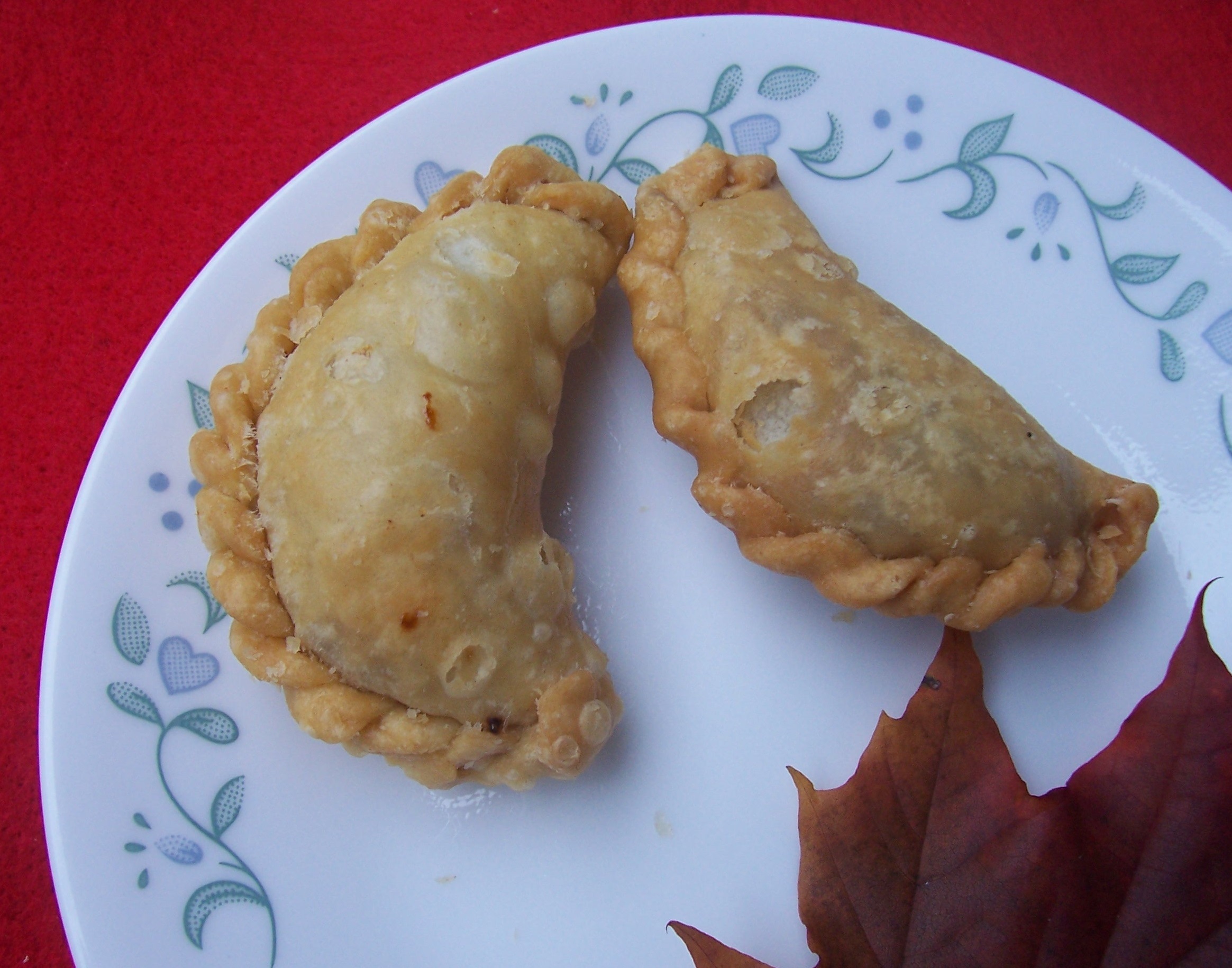Holi is almost upon us and besides the colourful celebration ,almost everyone looks forward to the delicious traditional delicacies served up on the occasion.Our humble gujiya is a wrapped and fried pastry with khoya and dryfruits .In northen states of India it is popular as gujiya whereas in Maharashtra and Karnataka it is famous as Karanji.
The Recipe: (For about 30 gujiyas)
For the Shell:
For the Filing:
200 g Khoya/Mava (Indian cooked dried milk) cut in small cubes
1/2 cup dry fruits (cashews, almonds, pistachios) slivered, sliced thin
1/4 cup raisins (green/golden ones are preferable )
1/2 cup sugar
1 Tbsp. Cardamom powder (I even crush the cardamom seeds using a rolling pin when in hurry)
ghee/Vegetable Oil for frying
For the binder:
To make the shell dough:
Add the gheel to the all purpose flour and rub the mixture between the palms of your hands. The ghee should be uniformly distributed in the flour and should resemble fine bread crumbs.
Add the water slowly to the flour and make a stiff dough. It is important to knead the dough well for good gujiyas. A good tip for all such dough is to set aside a tsp. of ghee initially and then at the very end add it in a corner of the plate you are using to knead. The dough is then broken in 2 -3 pieces and then made smooth by touching those pieces with the ghee in the corner till all the oil is absorbed. Cover the dough and let it rest for 1/2 an hour while the filling is prepared.
Stiff gujiya dough
Khoya, nuts, raisins and cardamom…….filling’s ready…it will be crumbly when dry
To make the filling:
Heat a wok or a saucepan on medium heat (no. 5 mark) and add the khoya (milk solids) in it.
Use a spatula to break the big lumps of the khoya.
Keep frying the khoya till it turns golden brown. The heat can be reduced a little bit if you are not able to stir all the khoya to (no. 4 mark). Once the khoya turns brown, add the nuts, raisins and cardamom powder.
Let the mixture cool and then add sugar to the mixture. The sugar amount can be varied as per taste too.
To make the Gujiyas:
First prepare the binder paste by mixing the all purpose flour and water. Set it aside.
The dough should be more pliable now as it has rested (goes same as humans ;-) ). Break the dough into 30 equal parts and keep rounding them with your palms as you are breaking. Cover the broken and rounded dough with a moist cloth so that they do not dry too much.
Using a rolling pin, roll each dough ball into a round about 2.5″ in diameter.
Apply the binder paste along the edges. Use your index finger to dip in the binder paste and then spread it around the circumference of the rolled out round.
Add about 1 Tbsp. of the filling into the round and fold the round into a semicircle now. At this step, you can either press all the edges hard so that they do not open, or use a gujiya mold or make a murri. The murri is made by pulling very small portions of the dough edge and rolling it over the edges. Honestly, it is a little difficult to write about it, its easier to learn when seen. I shall try someday to insert a video here but that has to wait. Keep the prepared gujiya aside and cover with a moist towel while you prepare the other gujiyas.
Almost round ;-) dough and filling
Folding and closing in process
The wok or frying pan should at least have 2″ of gheel. Start heating the ghee on medium heat as you prepare the gujiyas. Once 5 or 6 gujiyas are ready, add them to the ghee. Drop a tiny dough piece to check the ghee. It should not be so hot that the dough ball comes to the surface at once. The ghee should be just hot enough that the dough ball stays immersed for about 30 seconds. You should be able to see the bubbles as you add the dough piece. Lower the heat just a little bit to about medium low (gas mark 4) and fry the gujiyas till golden and crisp.
Gujiyas in hot ghee
Serve hot or at room temperature. These gujiyas keep well for at least 2 weeks in an airtight container.
These gujiyas are sometimes further dipped in sugar syrup. The consistency of the sugar syrup varies. The sugar syrup can be quite dry or even a little liquid resulting in different tasting gujiyas. I most often like it without the extra sugar though the other kinds have their own place in my heart;-) .
l
 A very cool cool icecream which wil lmake every one to ask for more.This recipe beats any store bought icecream.In fact it is an addicting recipe and the easiest ever ice cream for your near and dear ones.Love it...amazing cooking...anamika
A very cool cool icecream which wil lmake every one to ask for more.This recipe beats any store bought icecream.In fact it is an addicting recipe and the easiest ever ice cream for your near and dear ones.Love it...amazing cooking...anamika









